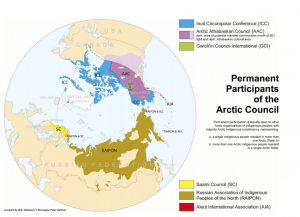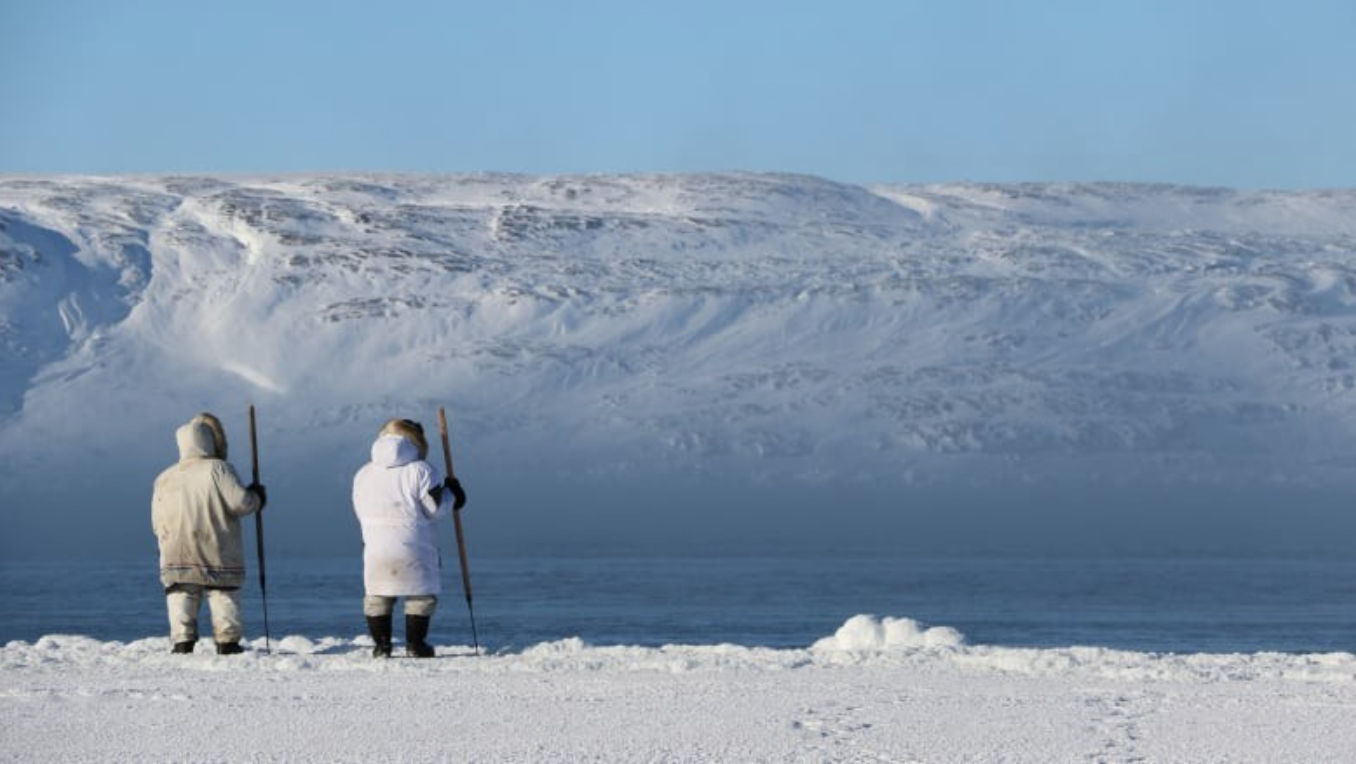As a result of climate change and increased globalization, the environment and societies of the Arctic are experiencing major shifts and upheavals. As the Arctic changes, new and complex challenges are being created that we will have to address in the next century.
These issues are particularly significant for the Indigenous peoples of the Arctic who have lived there since time immemorial. There are nearly 500,000 Indigenous peoples living in the Arctic, which is about 10% of the Arctic population. They have a deep relationship with the lands, waters, and species of their regions and act as caretakers and stewards of these environments as their cultures, customs, and traditions are closely tied to this mutual relationship.
Arctic climate change is making the region more hospitable and opening seaways to increased travel, making tourism a more attractive industry. This increased attention is furthered as the Arctic is increasingly focused on politically and economically. Many people are now looking at the Arctic not only as a future developmental dream, but also as a ‘last chance’ tourism destination. This website deepens the conversation about tourism in the Arctic, particularly the consequences–both good and bad–for Indigenous communities.
What you can find on this website!
- The challenges page includes more context to the questions we are asking and dives into our themes of Indigenous representation and tourism
- This issues and policy pages provide more depth to these discussion, explore them!
- The how to get involved and how to learn more pages will be helpful as you look to stay engaged with Arctic issues
- Our acknowledgements page says thank you to our supporters and provides our references cited
Context for the site
- There are nearly 500,000 Indigenous peoples living in the Arctic, which is about 10% of the Arctic population. There are six Permanent Participants on the Arctic Council who represent Indigenous communities across the Arctic. The figure below shows the Permanent Participants and their geographic distribution. There is more context provided on Indigenous representation in the issues and policy sub-tab.

- The Arctic has a lot of wildlife tourist attractions especially including: whale watching, narwhals, polar bears, reindeer, arctic foxes, muskoxen, unique bird species, and national parks. Additionally, there is ample opportunity for outdoor adventure tourism including recreational sport fishing in the Arctic. In the past few decades, interest in Arctic tourism has grown substantially. If not done sustainably and with cultural responsibility, tourism can be detrimental to ecosystems and to local and indigenous communities. There is more information and context provided in the sub-tabs.
